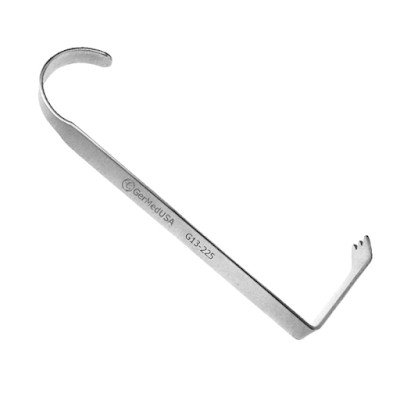In this modern era where everything goes towards advancement, the healthcare profession also becomes more updated and upgraded. New techniques and tools are introducing every day that helps in maintaining human health at the best level. It is very significant for all healthcare professionals to choose the best tool and technique for their patients.
Do you know why it is important to
get the best tool for the desired surgery?
Surgeries
never are accomplished without a perfect tool. Either it’s a cutting
instrument, grasping, or retracting instrument; getting desired results is
probable without using them. By looking at the importance of these surgical
instruments, I am revealing here the best use of retractors that is the best
and suitable choice for every healthcare professional to accomplish excellent
results in surgeries. A retractor is defined as a surgical instrument used to
retract the delicate tissues, separate the edges of the surgical incision, or
to hold back the examined organs.
Functions of Hibbs Retractor
Hibbs Retractor
is an incredible instrument and primarily used to hold back organs or tissues
under the surgical areas. It offers delicate retraction of superior soft
tissues in deep regions of the body where massive tissues cause an obstructed
view. It features a long flat blade with curved ends that allow accurate and
precise holding. Thus, it is specifically designed to provide a stronghold with
an elegantly curved handle and sharp tooth when more leverage is required. The
deep curve ensures more exposure to the operating field and allows greater
access to manipulate and hold tissues during surgical procedures.
For
your convenience, I have listed some of the important uses below.
This
versatile retractor is widely used to
- Retract, expose or push tissue, muscles, organs, or bones during surgery.
- The depth of the incision determines the size and model of the retractor.
- Smaller models are used to hold back skin and surface tissue, while the larger pattern is designed to retract bones, muscles, and organs in deeper cavities.
- Minimize trauma, the position of the retractors must be changed frequently.
It
comes in multiple variations to accommodate the surgeons in a wide range of
medical approaches.
Here
I have mentioned a basic model of this versatile instrument.
- Hand-held retractor: Must be held during the surgical procedures
Hibbs Retractor and Related Surgeries
It is widely used for many surgical procedures. I have tried to summarize all, but
due to extensive resources and surgeon’s preferences, I may skip some
surgeries. Surgeons and healthcare providers can use this versatile instrument
according to their needs and surgical type.
- Retraction of anatomical structures
- Orthopedic surgeries
- Laparoscopic surgery
- Arthroplasty
- Joint replacement surgery
In all these surgeries, the prerequisite for enough surgical exposure leads to the use of this hand-held tool, securing up the operating room personnel and thus scanty the assistant of direct exposure of the surgical site. This traditional type is often presented in a wide range of variations in order to fulfill all the surgical needs. In simple words, it is effective, easy to use, and exerts a finite and known force, thereby avoiding the risk of tissue destruction.

Post a Comment